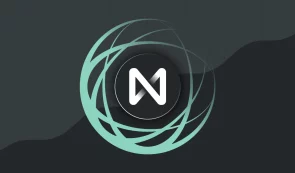What is NEAR Protocol
The NEAR Protocol is a public first-layer blockchain that aims to incentivize a network of computers to run a platform for developers to create and release decentralized applications (dApps).
The protocol cryptocurrency, also called NEAR, is used to pay transaction and storage fees. NEAR tokens can also be staked by those involved in achieving network consensus as transaction validators.
History of the NEAR Protocol
The founders of NEAR are Ukrainian computer scientists and mathematicians Alexander Skidanov and Iliya Polosukhin. They have been operating on the protocol since 2017, and the NEAR mainnet came online in August 2020.
Polosukhin also worked on the open-source machine learning library TensorFlow. Skidanov and Polosukhin aimed to create a better Ethereum without relying on the scalability of a second layer.
How does the NEAR Protocol work?
The NEAR Protocol is a blockchain that achieves consensus through the Proof-of-Stake (PoS) mechanism, with the concept of sharding as one of the main aspects of the project.
Sharding is a process that aims to divide a network’s infrastructure into several segments so that computers, also known as nodes (or nodes), can process only a portion of the network’s transactions.
NEAR functions similarly to other centralized data storage systems such as Amazon Web Services (AWS), which serve as the base layer on which applications are built. But instead of being run by a single person, NEAR is run and maintained by a distributed network of nodes.
NEAR has advanced the concept of sharding with its unique block sharding solution named “Nightshade,” which launched in November 2021 as Simple Nightshade. Since validators no longer have to process all incoming transactions but only those within shards, Nightshade facilitates infinite scaling.
Nightshade
In addition to the distributed architecture, sharding allows the blockchain to scale more efficiently while allowing for more transactions per second and lower transaction fees.
Nightshade allows the NEAR protocol to maintain a single data chain while distributing the computations required to maintain that data into “shards/chunks.” These chunks are processed by nodes that go through the information and add it to the main network.
Rainbow Bridge
Using the Rainbow Bridge application, any information cryptographically provable in NEAR can be used in Ethereum contracts and vice versa. NEAR network participants can easily transfer ETH tokens between the Ethereum and NEAR blockchains.
To transfer tokens from Ethereum to the NEAR Protocol, a user must first deposit tokens into an Ethereum smart contract. These tokens are then locked, and new tokens are created on NEAR’s platform to represent the original ones.
The process can be reversed when the user wishes to receive their original tokens, as the original funds are stored via a smart contract.
Aurora
Aurora is a second-layer scaling solution built on top of the NEAR protocol. It is designed for developers to run their decentralized Ethereum applications on the NEAR network.
Aurora is built using the Ethereum Virtual Machine (EVM) technology and a cross-chain bridge that allows developers to connect their smart contracts and Ethereum assets seamlessly.
Developers can use Aurora to take advantage of the low-fee, high-throughput NEAR protocol with the familiarity and application network of Ethereum.
Most popular dApps on the NEAR network
- Paras: NFT marketplace using decentralized storage via IPFS, with its own PARAS token. Interestingly, NEAR has its own version of CryptoPunks called NPunks
- Flux: An open prediction market protocol using FLX tokens
- Burrow: A lending protocol similar to Aave
- Ref Finance: A token exchange similar to Uniswap
